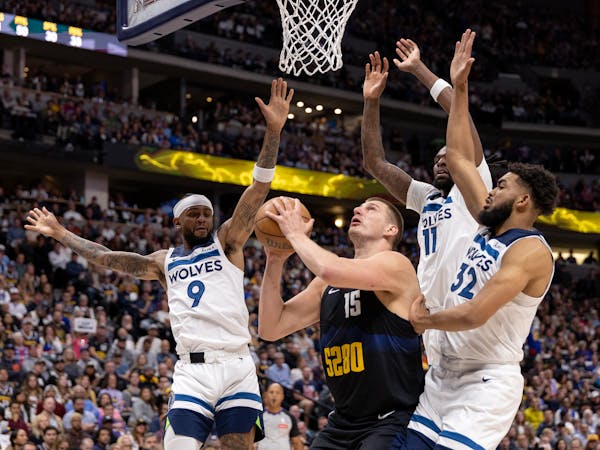Although many Minnesotans are excited about the return to in-person learning for our children and the prospect of broad COVID-19 vaccine eligibility, many public health advocates remain concerned about the state's childhood immunization rates. According to the most recent data from the Minnesota Department of Health, the state is behind by approximately 42,000 doses of the recommended early childhood vaccines and 21,000 doses of the recommended adolescent vaccines when comparing the calendar year 2019 with 2020 (January to December). Specifically, early adolescents ages 11-12 need vaccines to protect against meningitis, HPV-related cancers and pertussis (whooping cough).
Due to the ongoing COVID-19 pandemic, many children have not yet received these crucial vaccines, and the rising number of under-immunized students in our schools can lead to outbreaks of preventable diseases. As we look toward the coming spring and summer and the hope that our children will soon be vaccinated against COVID-19, it is important to plan ahead when it comes to your children's immunizations. The Centers for Disease Control and Prevention currently recommends a minimum interval of 14 days before and after COVID-19 vaccines. This means that there could be as much as an eight-week period in which no other vaccines can be administered, depending on which COVID-19 vaccine your child receives. This spring, parents should call their child's primary care provider to ensure that they are up to date with the recommended immunizations to allow for a safe return to in-person education for everyone.
Dr. Garrett Jones, Minneapolis
IMMIGRATION
Our actions destabilize these places
Any policy regarding immigrants at our borders has to start with the recognition of our own responsibility in two of the major problems that lead to migration from nations to the south: climate change and lack of fair trade.
The impact of climate change from carbon emissions is no longer theoretical. The yearslong drought in Honduras and Guatemala was interrupted recently by two Category 4 storms in a month when hurricanes used to be rare and in a year that broke records for storms. Families who have farmed land for centuries can no longer cope as they are battered between extremes. Of the major industrialized economies, the United States is a top per capita carbon emitter. Hands down, we beat China, India and nearly everyone else.
Regarding fair trade, we need to wean ourselves from the expectation that our goods must be available at prices that keep in poverty other people who grow our food, weave our clothes and make our electronics and appliances. That low number on the price tag is possible only through someone else's misery.
Yes, there are other reasons that people flee their homelands, but that doesn't mean we can excuse ourselves from the big problems that we create. And yes, it will be hard to figure out how to accommodate the incoming stream, but that gives us no right to turn away fellow human beings who have been forced into a desperate existence for the sake of our own comfort and profit. Helping those we have harmed is a moral responsibility.
Jeff Naylor, Minneapolis
• • •
The recent editorial "Immigrants boost state's economy" (March 25) listed accommodations being made by Andersen Windows (which makes some mighty fine windows) in order to attract more immigrants as workers. In addition to higher wages and health benefits, Andersen is offering English language classes, foot-washing stations and prayer rooms "designed to appeal to Muslims." While I happen to think that this is a positive development, I know that others may object.
I would like to point out that in 1918 a gentleman named Walter, who lived in a small town in Wisconsin and ran a factory, opened a residence to house immigrants from Germany, Austria and Russia, the majority of them speaking little or no English in addition to being poor and uneducated. These workers were offered English lessons, classes in American history and citizenship and also were taught the basics of hygiene and nutrition.
The workers were able to thrive, and the factory and town prospered, thanks to the actions of Walter Kohler and what is now the Kohler Company (which makes some mighty fine toilets).
Theresa J. Lippert, St. Paul
ASIAN AMERICANS
Minnesota can surely do better
In the past year, our country's most powerful leaders failed Asian Americans at every opportunity by wallowing in racist stereotypes that assigned blame to the Asian American community for a global pandemic. The rhetoric became increasingly hostile and resulted in violence and harassment that disproportionately targeted children, women and the elderly ("Support and protect Asian Americans," editorial, March 23).
Here at home in Minnesota, we were devastated by the horrific mass shooting in Georgia that killed eight people, six of whom were Asian women. We grieve for the lives lost. We grieve because we know we are not protected. We grieve because it could have happened here. Last year, Minnesota ranked 15th among all states for the highest number of reported hate incidents against Asian Americans in the country. Across the United States, we saw a 150% increase in reported anti-Asian violence.
Minnesota state law has loopholes that make it harder to classify racist violence. That's why we are supporting Communities Combating Hate and are advocating to reform hate crime laws. The combating-hate bill, HF 1691, would close loopholes that misclassify hate acts and allow victims to report hate incidents to non-law enforcement entities, like community organizations and the Minnesota Department of Human Rights. Additionally, the bill provides much needed support for the victims of hate crimes.
We stand in solidarity with all Minnesotans and Americans who understand that to end racism and misogyny, we must see it for what it is and work across and between our communities to do better so we can stop hate.
Bo Thao-Urabe, St. Paul, and Bilal Alkatout, Minneapolis
Bo Thao-Urabe is executive and network director and Bilal Alkatout is board chair at the Coalition of Asian American Leaders.
MASS SHOOTINGS
If they get help early, no one dies
Unfortunately more people had to die for us to better understand mass shootings, and thanks to the research and writing ("Shootings are back, as is the question: Why?" Opinion Exchange, March 26), we do. As the researchers/authors point out, most of the shootings are not by people who have serious and persistent mental illness but by people whose ability to cope has reached its limit.
The ability to cope is essential for all of us, and when it fails, reaching out for help is the first step. The internet, as wonderful as it is, also has its very dark side, as is true of the availability of assault weapons, especially. Let's get people help before they turn to assaultive behavior.
But we can't "count" the prevention that is required: How many innocent people didn't die because a "potential" shooter got help? We can only offer the help. And we do. It's out there for the taking.
In Minnesota every county has a 24/7 crisis service (tinyurl.com/mental-health-phone), the National Suicide Prevention Lifeline at 800-273-TALK (8255) is always available, and for those who are in the earlier stages of what may eventually become a crisis, there is the Walk-In Counseling Center (despite our name, it's all by phone or internet right now at walkin.org).
When the tragedy happens, we blame. Let's do more, and earlier.
Mary Weeks, Minneapolis
SHOTS
Finally, a positive connotation
After reading too many headlines for too long about homicides, suicides and mass shootings, finally a positive headline using the four-letter word "shot": the front-page March 26 headline "Shots opening to all over age 16."
Bruce Holmberg, Rush City, Minn.
We want to hear from you. Send us your thoughts here.
Store guns safely and save lives

Why we protested at the University of Minnesota


